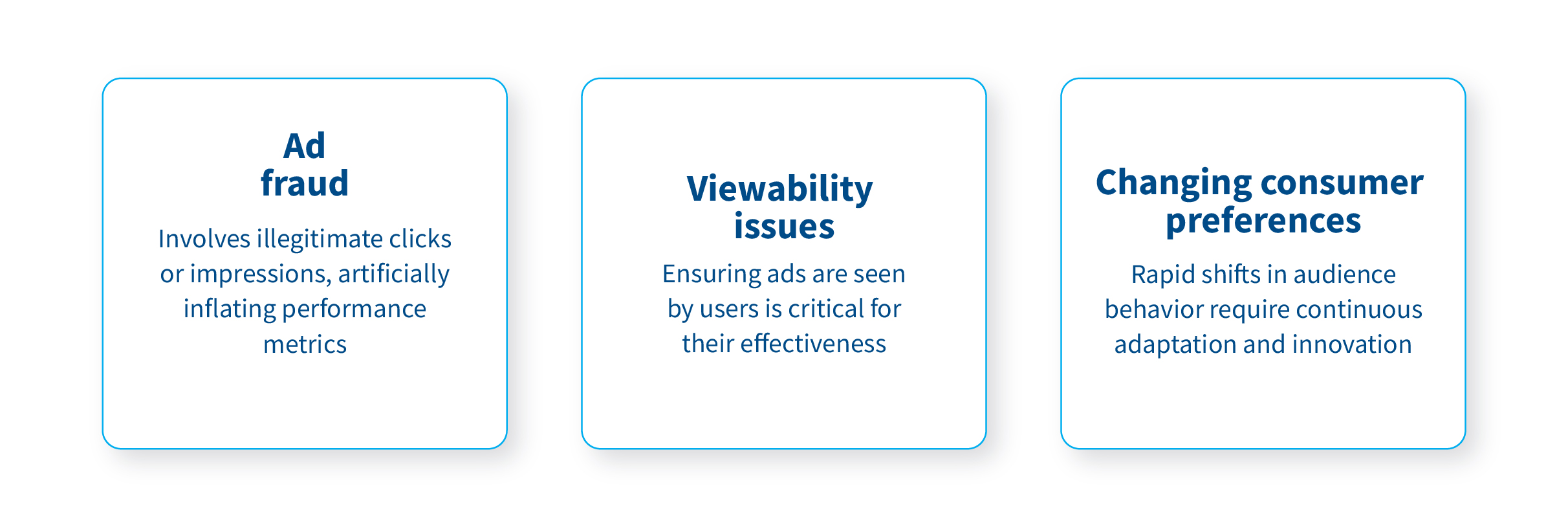Enhancing Digital Ad Performance: Strategic Vendor Management and Technology Optimization
In today’s fast-paced digital world, media companies face the dual challenge of optimizing ad revenue while delivering targeted content effectively. Navigating this landscape demands strategic vendor management and advanced technology optimization.
Digital advertising is a complex field where staying ahead of trends and ensuring efficient resource utilization are paramount for success. Effective ad performance not only drives revenue but also enhances user engagement and brand loyalty. In this blog, we will explore key strategies and best practices to enhance digital ad performance, grounded in industry insights and expertise.
Understanding digital ad performance
Digital ad performance hinges on several key metrics: click-through rates (CTR), conversion rates, return on ad spend (ROAS), and overall engagement. These metrics provide a window into the effectiveness of ad campaigns, guiding businesses in refining their strategies. However, achieving and maintaining high performance in these areas is fraught with challenges such as ad fraud, viewability issues, and evolving consumer preferences. Now, let us understand the key metrics for digital ad performance.
Key metrics for digital ad performance

Common challenges in digital advertising

Strategic vendor management
Effective vendor management is pivotal in enhancing digital ad revenue and operational efficiency. Streamlining vendor selection, management, and integration ensures that businesses maximize their digital assets.
Vendor management strategies
- Selection and onboarding:
- Define clear objectives: Precise advertising objectives aligned with business goals are the foundation of successful vendor management.
- Conduct thorough research: Assess vendors based on market insights, capabilities, and technological offerings to ensure reliability and advancement.
- Negotiate terms: Secure favorable terms to improve cost-efficiency and service excellence.
- Onboarding process: Implement structured onboarding frameworks for seamless integration of vendor technologies, establishing communication protocols and performance metrics from the outset.
- Performance monitoring and evaluation
- Set performance metrics: Establish robust KPIs tailored to strategic needs, ensuring alignment on success metrics.
- Regular assessments: Use advanced tools for ongoing vendor performance evaluations, identifying areas for improvement.
- Feedback and improvement: Develop continuous improvement strategies based on performance data through regular feedback sessions and collaborative problem-solving.
- Relationship management
- Build strong relationships: Fostering and maintaining strong vendor relationships is crucial for long-term success.
- Communication channels: Effective communication strategies facilitate smooth operations and quick resolutions.
- Long-term strategy: Explore future growth opportunities to expand vendor relationships effectively, identifying new areas for collaboration and innovation.
Technology optimization
LTIMindtree’s proprietary tools, plays a crucial role in enhancing ad performance through advanced data analytics and machine learning capabilities, enabling real-time decision-making and predictive insights.
Ad tech stack evaluation
- Audit current technologies: Conduct regular assessments to identify gaps and opportunities, ensuring the technology in use is up-to-date and effective.
- Integration and compatibility: Ensure seamless integration of new technologies with a focus on system compatibility.
- Data management: Optimize data management and targeting strategies using LTIMindtree’s capabilities, improving data quality and compliance with data protection regulations.
Leveraging data analytics and insights
- Utilize data analytics: Derive deep insights into audience behaviors and campaign performance using AI tools, making data-driven decisions to optimize strategies.
- Real-time decision-making: Implement agile campaign adjustments using real-time data, ensuring maximum performance.
- Predictive analytics: Forecast future trends and consumer responses with predictive models, anticipating market changes and adjusting strategies accordingly.
Enhancing user experience and engagement
- Optimize ad placement: Use data-driven strategies to determine optimal ad placements, ensuring ads reach the right audience at the right time.
- Mobile optimization: Tailor strategies for mobile viewership, optimizing ad formats and ensuring fast load times.
- Creative content: Develop compelling ad content that resonates with audiences, informed by advanced analytical tools for maximum engagement.
Conclusion
By adopting these strategies, media companies can navigate the complex digital landscape, enhancing ad performance and revenue. LTIMindtree’s expertise in vendor management and technology optimization provides the foundation for sustained profitability and growth.
Media publishing entities should critically evaluate their current vendor partnerships and technological deployments. Consider adopting the strategic approaches discussed here to amplify your digital advertising initiatives and drive transformation.
Latest Blogs
A closer look at Kimi K2 Thinking, an open agentic model that pushes autonomy, security, and…
We live in an era where data drives every strategic shift, fuels every decision, and informs…
The Evolution of Third-Party Risk: When Trust Meets Technology Not long ago, third-party risk…
Today, media and entertainment are changing quickly. The combination of artificial intelligence,…




